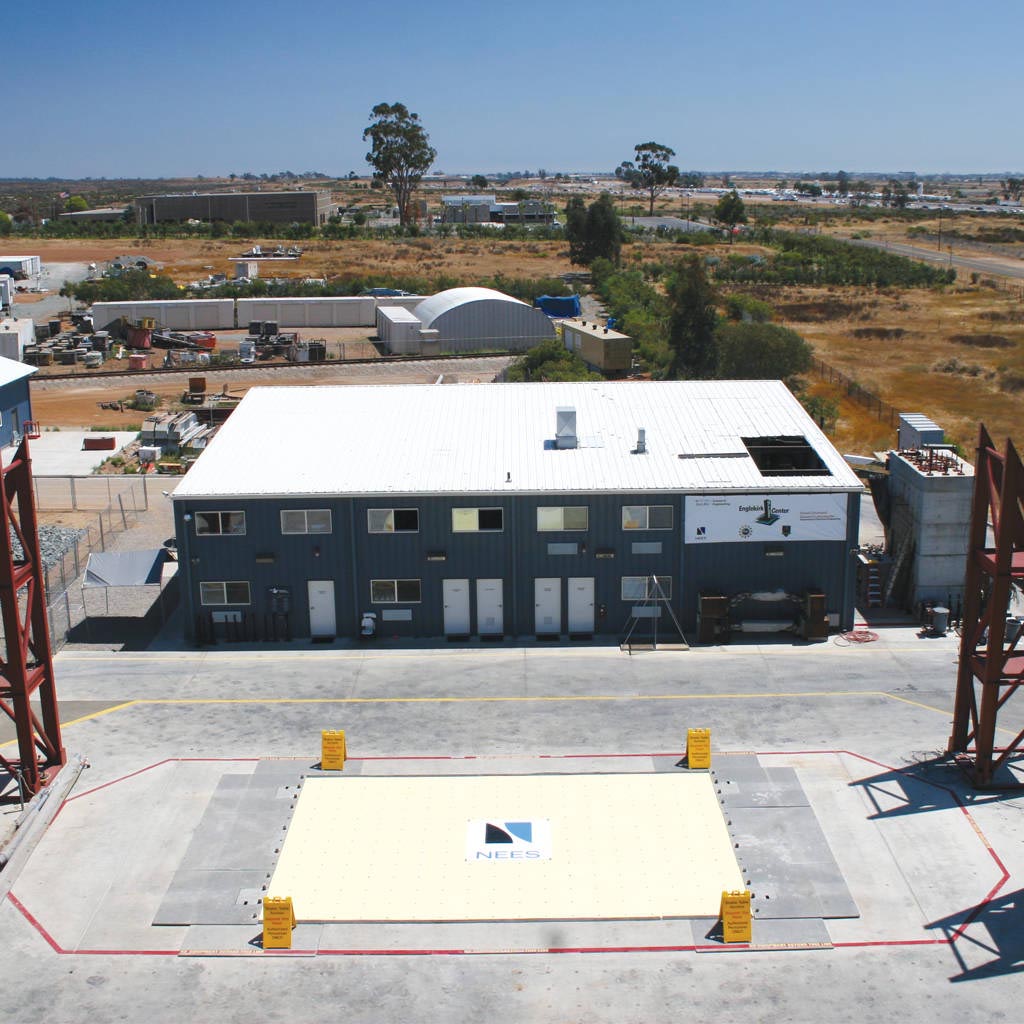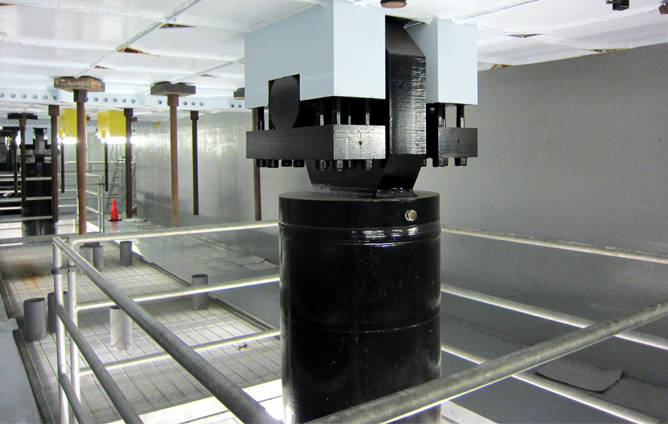
CUSTOMER CHALLENGE
The George E. Brown, Jr., Network for Earthquake Engineering Simulation (NEES), through its user-requirement-driven cyberinfrastructure, NEEShub, serves and connects 14 seismic research facilities across the U.S. The mission of NEES is to accelerate improvements in seismic design and performance by serving as an indispensible collaboratory for discovery and innovation.
A key challenge for the network includes finding a way to efficiently maintain and operate the mechanical testing and simulation test systems in use across the NEES member sites. Effective routine maintenance and test system calibration are essential to upholding high levels of testing accuracy and test system uptime, so that engineers at each site can efficiently run tests, produce accurate test results and stay within operating budgets and tight test schedule commitments.
In the early 2000s, the National Science Foundation (NSF) worked with selected universities to establish a world-leading network of testing laboratories dedicated to earthquake and tsunami research. NSF through their management entity then called NEESinc, started requesting proposals for operating plans to be funded through five-year sub-awards that would be given to select vendors for supporting the network in various ways, including maintaining the test equipment at NEES member sites. This maintenance would be managed through the NEES Operations Center, now referred to as “NEEScomm,” and located in the Discovery Park of Purdue University in West Lafayette, Indiana. Effective on October 1, 2009, NEEScomm entered into a cooperative agreement with the National Science Foundation (NSF) to manage the operations of NEES during 2010-2014.
“Our goal is to support the research and education efforts of the community and to provide transparency within the operations of NEES. Some of the key elements needed to achieve this goal are to maintain and improve the current simulation infrastructure, and to integrate the network support functionality wherever appropriate,” said Julio Ramirez, NEEScomm Center Director.
“As we transitioned management of the operations from the previous entity, we realized that nine NEES member sites use MTS test systems, so it seemed like a logical choice to provide maintenance for those sites under the MTS umbrella, and to extend the same service to other sites of the network wishing to participate in the agreement with MTS,” Ramirez added. “Our experience has been that quality and reliability of the technology, and the level of service, has made MTS the right choice for us.”
MTS SOLUTION
In 2005, MTS launched a comprehensive support plan for the member sites that use MTS technology for their seismic testing and simulation. The initial plan included routine maintenance, calibration and an initial supply of fixtures and spares. Each year the support plan is evaluated against established metrics and success measurements to quantify the return on investment.
By the fifth year, uptime has reached 97.8% and the traditional maintenance techniques are supplemented with 24/7 monitoring and analysis of critical system elements such as hydraulic fluid condition. The MTS HydraulixSM program provides scheduled monitoring of test system hydraulic fluid cleanliness, as a means of preventing serious and costly mechanical issues from arising in the future. The MTS accredited calibration and alignment services help to uphold superior instrumentation precision and test data integrity.
“Over the last five years, the MTS maintenance plan has helped the NEES sites maintain the utmost accuracy and reliability of the test results for the researchers who use their facilities,” Ramirez said. “The centralized nature of the program has also benefited NEES from a management perspective. Having a single and competent partner like MTS to maintain a majority of our member sites keeps costs down and greatly improves our efficiency.”
CUSTOMER BENEFITS
During its implementation, the MTS maintenance sub-award has resulted in several improvements for NEEScomm. Return-on-investment and equipment availability figures have increased significantly, and unplanned downtime has steadily trended in the opposite direction.
“My role at NEES frequently takes me to members’ seismic testing facilities, as well as provides contact with researchers using those facilities. I have heard nothing but positive feedback from those sites under the MTS maintenance agreement, and from the researchers using the equipment,” Ramirez said. “The equipment always seems to be ready, available and working properly, and MTS people are highly responsive and always willing to listen. We consider our partnership with MTS to be one of the cornerstones of our success to date.”
Ramirez also envisions MTS playing a key role in enhancing the capabilities of NEES, well into the future: “Our researchers want to have more ability to conduct not only experiments but also simulations across the community, all in real time. That is probably a few years away. But MTS has been very helpful on both the equipment and software side, and they stand to be instrumental in helping us capitalize even more on hybrid simulation in the years to come.”

